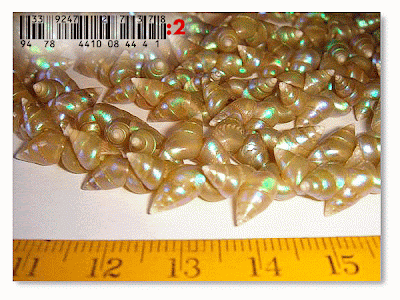 SELLER'S NOTES:
SELLER'S NOTES:- #2_ Vintage Tasmanian Maireener Shell Lei Necklace Iridescent Pink
This is a beautiful vintage Tasmanian Maireener Shell lei necklace. The shells are strung on thread. I do not know if these shells were dyed [almost certainly they have been] or not, but they awesome shades of iridescent pink and blue green colors ... It is in excellent condition and I do not see any broken or missing shells. It measures approximately 34 inches long from end to end ... SOLD FOR: US $152.49 = Approx.AU $175.32
- #3 _Vintage Tasmanian Maireener Shell Lei Necklace Iridescent WhiteThis is a beautiful vintage Tasmanian Maireener Shell lei necklace. The shells are strung on thread. I do not know if these shells were dyed or not, [unlikely to have been]but they awesome shades of iridescent blue green colors ... It is in excellent condition and I do not see any broken or missing shells. It measures approximately 34 inches long from end to end.... SOLD FOR: US $149.99 Approx. AU $172.44
- #1 _ SOLD FOR: US $247.50 Approx. AU $284.55
The most interesting thing about this eBAY sale is that these maireener shell necklaces were described as they were ... "Vintage Tasmanian Maireener Shell Lei Necklace " ... They seem to have come to the seller's possession via West Coast USA sources and it is possible that one way or another the Hawaiian links have been subliminally made.


















































